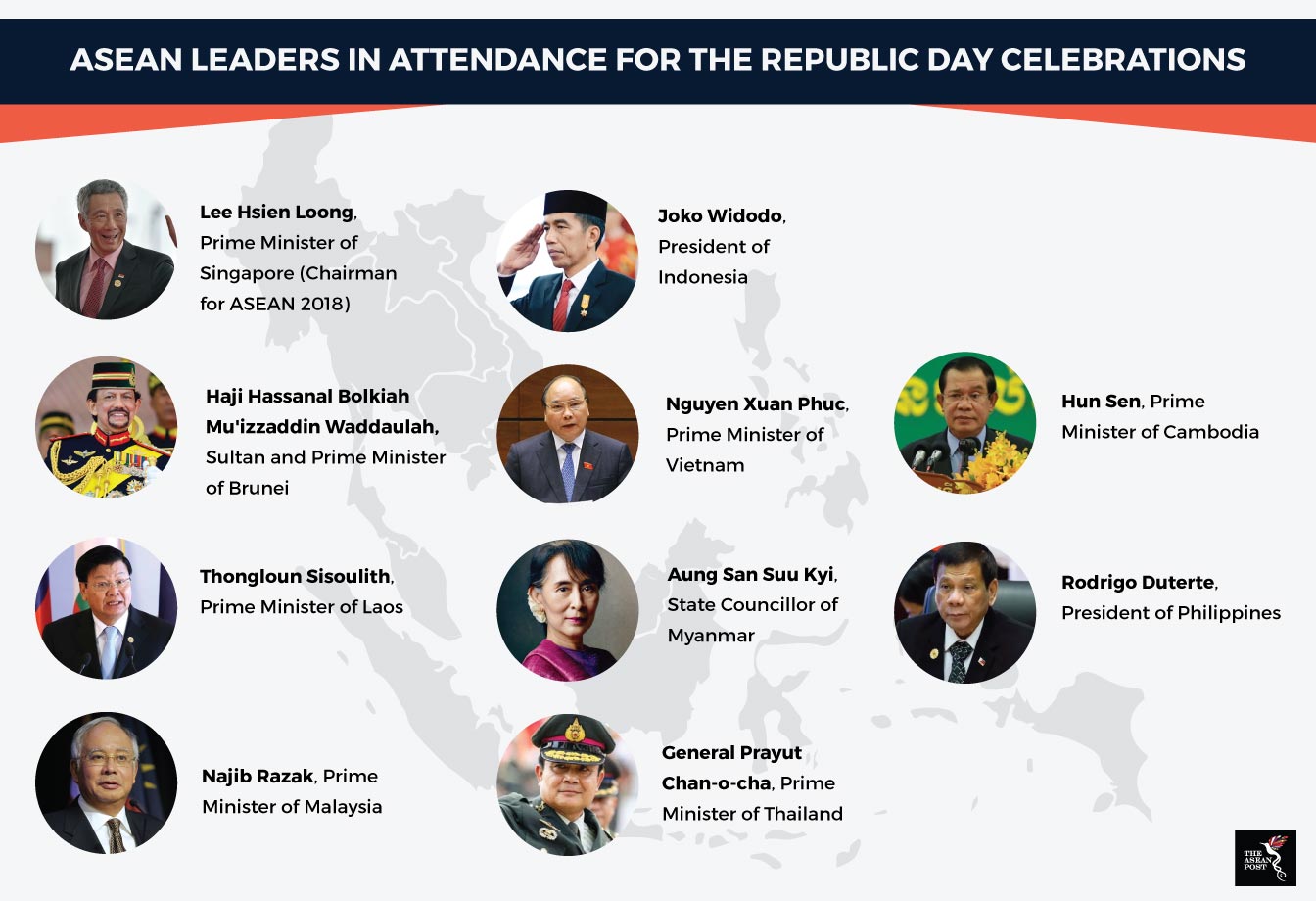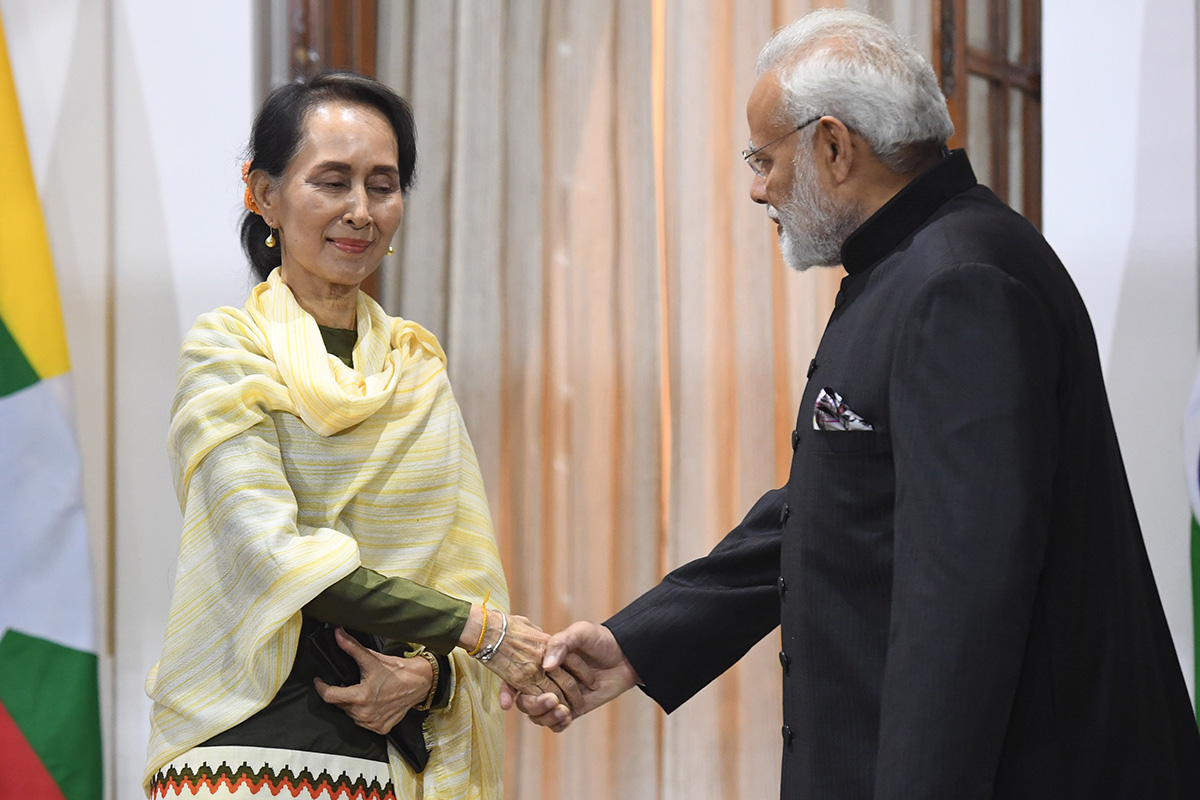India’s Republic Day is a big deal for a nation of 1.3 billion. It was on this day in 1950, when the constitution of India came into effect, marking the moment when the country became a full-fledged republic. The celebrations are nothing short of grand – with patriotic military parades embodying Indian pride and valour.
However, this year’s edition is an even bigger deal than usual.
In an unprecedented move, Indian Prime Minister, Narendra Modi has invited the heads of states and government of all 10-member states of the Association of Southeast Asian Nations (ASEAN) as chief guests for the event. This historic move is hailed by many as part of India’s courtship of ASEAN amid China’s growing influence on the region. Southeast Asia is the fastest growing region in the world, hence, it makes perfect sense to want ASEAN to be on your side.
As the carrots of enticement pour in, it may lead some to think that ASEAN has come to a point where it has to choose which side it should align with. However, the fact is, ASEAN need not choose – this isn’t a zero-sum game for the association.

Not a small player
A common way of looking at how these geopolitical factors unfold is through the lens of power politics. India and China are significant economic and military powers. Moreover, India isn’t only representative of itself but is a crucial centrepiece of the American strategy towards a “free and open Indo-Pacific.”
Hence, given the dynamics of US-India-China-ASEAN at play, ASEAN is undoubtedly the smallest player and the popular saying, when elephants fight, ants perish holds sway. ASEAN member states are perceived to be the unfortunate ants that must give way to the larger geopolitical forces of the US, India and China.
But the reality of the situation has been far from that. ASEAN may be made up of a motley bunch of nations but when combined, is larger than the sum of its parts.
What ASEAN brings to the table is twofold. Firstly, it is a robust, developing region, with a market access of 630 million, making it a tempting lure for expanding the trade of goods and services. ASEAN’s second advantage is its centrality in an ever-changing geopolitical climate.
Leading the pack in terms of trade is China – whose trade with ASEAN in 2016-17 stood at US$460 billion. In comparison, India’s trade with ASEAN was six times smaller at a mere US$71 billion.
If Modi’s foreign policy posture towards Southeast Asia has shown one thing, its that India plans to ramp those numbers up – and this means fostering closer ties with ASEAN member states. An economically sound way of doing so is by bolstering the existing ASEAN-India free trade agreement (FTA) to include a wider range of goods and services.
However, ASEAN’s goals are farther reaching and this is demonstrated in its role with the Regional Comprehensive Economic Partnership (RCEP). The trade deal which is often conflated as a “Chinese response” to the previously US-led Trans-Pacific Partnership (TPP) is actually inherently ASEAN-led. This is because, essentially, RCEP is an attempt to deepen existing FTA cooperation between ASEAN and its six existing FTA partners (China, South Korea, Japan, India, Australia and New Zealand) to form an integrated regional economic agreement.
Herein, ASEAN plays the role of manager of relations – evidenced by its ability to bring major powers like India and China, to the discussion table. In the case of RCEP, it is to trash out a trade agreement.
But ASEAN’s managerial resume extends to even before the idea of RCEP was mooted. A significant example is the ASEAN Regional Forum (ARF) – the only dialogue platform that brings together every East Asian geopolitical player including the US, Russia, China, Japan, South Korea and North Korea.
The reason for ASEAN’s ability to do so lies in its inherent centrality. The concept of ASEAN centrality as illustrated by prominent Singaporean diplomat, Bilahari Kausikan, is a fluid, shape-shifting one. In this case, ASEAN centrality is only recognised by larger powers because it is used as a vessel to serve their own interests.
Every great power thinks it can have its way with ASEAN but time and time again, no single power has ever “captured” ASEAN for their own. This justifies how ASEAN member states can have military drills and initiatives with the US, as well as with China, be on good terms with North Korea, South Korea and Japan simultaneously, and have its leaders invited by the leaders of powers like China, the US and India.
At times, it may seem that ASEAN has faltered – and all eyes shift to Cambodia’s unusually cosy relations with Beijing. But, even in that case, ASEAN centrality is sure to frustrate China as it comes to the rescue in many ways. India and the Philippines have stepped up bilateral military efforts and the US has been actively courting Indonesia and Vietnam to counter China’s rise in the region.
However, if China has Cambodia in the bag, it is bound to present problems as the latter may play the “spoiler role” in an ASEAN consensus as it did during its chairmanship of ASEAN in 2012. But relative to the bigger picture, this only represents a single dimension within the complexity of ASEAN centrality. There are ways to fix that, with the association adopting an ASEAN minus X or a minilateralist approach.
ASEAN is in the clear – enamoured by her suitors there is no need to pick a favourite. International relations, after all, is polygamous.
Recommended stories:
